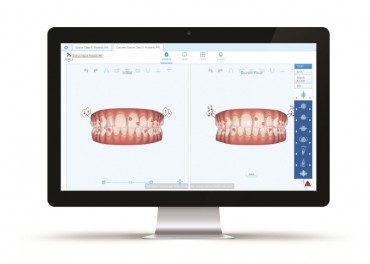- Largest ever real-world analysis of Cardiac Implantable Electronic Device (CIED) infection treatment presented at the American College of Cardiology’s 71st Annual Scientific Session [1] demonstrates that approximately 4 in 5 patients are not treated according to HRS/EHRA Class I guidelines [2,3] for CIED infection
- In the absence of guideline-driven care, the risk of death after a CIED infection is 32.4% [1]
- This real-world CIED Infection Medicare Study analyzed the 100% Medicare fee-for-service population over 14 years and included more than 1 million CIED patients. It represents a nationwide analysis of CIED infection care
- The findings demonstrate that adherence to guidelines with timely lead extraction is associated with higher rates of survival
- Philips supports physicians through a broad portfolio of Lead Management solutions designed for safety and predictability, including both laser and mechanical lead extraction devices
Amsterdam, the Netherlands, April 4 (Korea Bizwire) – Royal Philips (NYSE: PHG, AEX: PHIA), a global leader in health technology, today announced late-breaking results of a large-scale, real-world analysis of U.S. Centers for Medicare & Medicaid Services (CMS) data on the rates of guideline adherence and associated mortality in patients with CIED infection [1]. Results were presented at the American College of Cardiology’s 71st Annual Scientific Session by Sean Pokorney, M.D., Assistant Professor of Medicine at Duke University School of Medicine (U.S.) and member of the Duke Clinical Research Institute. The data demonstrated that approximately 4 in 5 patients are not treated according to HRS/EHRA Class I consensus recommendations and guidelines for CIED infection (full system extraction)[2,3]. Moreover, complete hardware removal (extraction) within 6 days was associated with a 42.9% lower risk of death compared with patients who did not undergo extraction[1].
The study examined 1,065,549 patients in Medicare in the USA who received a CIED between January 1, 2006 and December 31, 2019. Patients included in the CIED infection group were those that had an implant greater than 12 months old, had a primary diagnosis for infection of a device implant, and had documented antibiotic therapy. The study was an independent analysis conducted by Duke University and supported by a research grant from Philips. Philips had no role in the design or conduct of the analysis.
“This study highlights the life-threatening nature of device infections and the significant opportunities to improve care in these complex patients. The findings also emphasize the importance of timely diagnosis and complete treatment. Making things better for patients tomorrow will require working with clinicians across various specialties to advance education to help diagnose CIED infections and deliver timely care,” said Jonathan P. Piccini, MD., M.H.S., the lead investigator of the study, the Director of Cardiac Electrophysiology section at the Duke Heart Center. “The opportunity to ensure all patients have access to guideline-recommended care is not only imperative, but life-saving for patients across the world.”
“The need for greater awareness and education for physicians, patients, and caregivers is clearly shown by the results of this study, so when early signs of infection present, action that is consistent with guidelines is taken quickly.” said Trudie Lobban MBE, Founder of Arrhythmia Alliance, a global non-profit patient advocacy group.
CIEDs are life-saving devices and improve quality of life for many patients. Each year one million CIEDs are implanted worldwide [4] (which include pacemakers, implantable cardioverter-defibrillators and cardiac resynchronization devices). However, one in 20 of these patients will develop a CIED infection [5] within three years. Patients diagnosed with CIED infections are often treated with antibiotics, which is not an effective treatment option alone – 50-100% of patients treated with only antibiotics will experience an infection relapse [6,7]. Often medical professionals lack awareness and experience in CIED infection management resulting in patients being misdiagnosed or receiving suboptimal treatments which can lead to negative health outcomes. Current clinical practice guidelines recommend extraction for all patients with a definite CIED infection, including complete device and lead removal. It is estimated that globally more than 16,000 CIED patient lives are at risk each year due to improper treatment. CIED extraction is proven safe and effective, especially with earlier diagnosis, which can reduce mortality rates and long-term costs [8,9].
“This CIED Infection Medicare Study clearly demonstrates that increasing adherence to Class I guideline care can potentially save lives,” said Chris Landon, Senior Vice President and General Manager Image Guided Therapy Devices at Philips. “At Philips, we are committed to supporting evidence-based medical approaches and innovating solutions to help physicians improve outcomes and decrease mortality for CIED infection.”
Philips lead management solutions
Lead extraction, when indicated, is a highly successful, potentially life-saving procedure, with a clinical success rate of 97.7% and a procedural safety rate of 99.72% [10]. When lead extraction is indicated, Philips supports physicians with Lead Management solutions through a broad portfolio of tools designed for safety and predictability, including both laser and mechanical lead extraction devices. Philips is dedicated to helping physicians manage every lead safely, predictably, and responsibly by providing expert tools, training, and ongoing support.
To read more on how Philips supports improving guideline adherence, click here.
[1] Pokorney SD. Low Rates Of Guideline Directed Care Associated With Higher Mortality In Patients With Infections Of Pacemakers And Implantable Cardioverter Defibrillators. American College of Cardiology (ACC) Late Breaking Clinical Trials. Washington, DC, USA April 2022 [presentation].
[2] Kusumoto et al. 2017 HRS Expert Consensus Statement on Cardiovascular Implantable Electronic Device Lead Management and Extraction. Heart Rhythm, 2017.
[3] Blomström-Lundqvist, C., et al. (2020, Jun 1). European Heart Rhythm Association (EHRA) international consensus document on how to prevent, diagnose, and treat cardiac implantable electronic device infections-endorsed by HRS, APHRS, LAHRS, ISCVID, ESCMID in collaboration with EACTS. Eur Heart J, 41(21), 2012-2032. https://doi.org/10.1093/eurheartj/ehaa010.
[4] Greenspon A.J. J Am Coll Cardiol 58:1001–1006.; Kremers MS, Heart Rhythm 2013; 10:e59.
[5] Cantillon D. JACC EP. 2017.
[6] del Rio A, Anguera I, Miro JM, et al. Surgical treatment of pacemaker and defibrillator lead endocarditis: the impact of electrode lead extraction on outcome. Chest 2003;124:1451–9.
[7] Chua, J.D., et al. (2000). Diagnosis and management of infections involving implantable electrophysiologic cardiac devices. Annals of Internal Medicine, 133(8): 604-608.
[8] Le, K. Y., et al. (2011, Nov). Impact of timing of device removal on mortality in patients with cardiovascular
implantable electronic device infections. Heart Rhythm, 8(11), 1678-1685. 21.
[9] Greenspon, A. J., et al. (2018, May). Treatment patterns, costs, and mortality among Medicare beneficiaries with CIED infection. Pacing Clin Electrophysiol, 41(5), 495-503.
[10] Wazni, O. et. al. Lead Extraction in the Contemporary Setting: The LExICon Study: A Multicenter Observational RetrospectiveStudy of Consecutive Laser Lead Extractions, J Am Coll Cardiol, 55:579-586.
For further information, please contact:
Joost Maltha
Philips Global Press Office
Tel: +31 6 10 55 8116
E-mail: joost.maltha@philips.com
Fabienne van der Feer
Philips Image Guided Therapy
Tel: + 31 622 698 001
E-mail: fabienne.van.der.feer@philips.com
About Royal Philips
Royal Philips (NYSE: PHG, AEX: PHIA) is a leading health technology company focused on improving people’s health and well-being, and enabling better outcomes across the health continuum – from healthy living and prevention, to diagnosis, treatment and home care. Philips leverages advanced technology and deep clinical and consumer insights to deliver integrated solutions. Headquartered in the Netherlands, the company is a leader in diagnostic imaging, image-guided therapy, patient monitoring and health informatics, as well as in consumer health and home care. Philips generated 2021 sales of EUR 17.2 billion and employs approximately 78,000 employees with sales and services in more than 100 countries. News about Philips can be found at www.philips.com/newscenter.
Attachment
Source: Philips International B.V. via GLOBE NEWSWIRE








